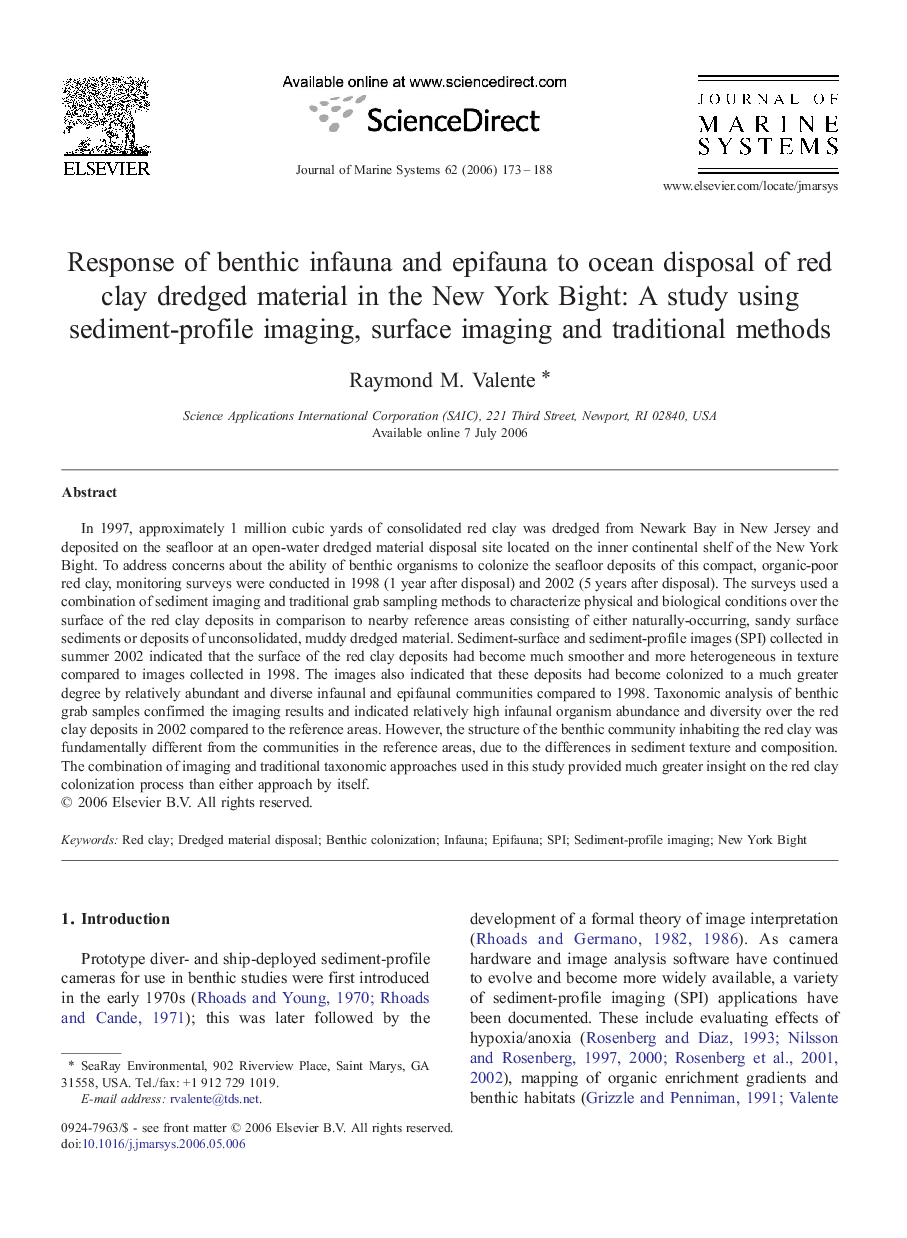| Article ID | Journal | Published Year | Pages | File Type |
|---|---|---|---|---|
| 4549224 | Journal of Marine Systems | 2006 | 16 Pages |
In 1997, approximately 1 million cubic yards of consolidated red clay was dredged from Newark Bay in New Jersey and deposited on the seafloor at an open-water dredged material disposal site located on the inner continental shelf of the New York Bight. To address concerns about the ability of benthic organisms to colonize the seafloor deposits of this compact, organic-poor red clay, monitoring surveys were conducted in 1998 (1 year after disposal) and 2002 (5 years after disposal). The surveys used a combination of sediment imaging and traditional grab sampling methods to characterize physical and biological conditions over the surface of the red clay deposits in comparison to nearby reference areas consisting of either naturally-occurring, sandy surface sediments or deposits of unconsolidated, muddy dredged material. Sediment-surface and sediment-profile images (SPI) collected in summer 2002 indicated that the surface of the red clay deposits had become much smoother and more heterogeneous in texture compared to images collected in 1998. The images also indicated that these deposits had become colonized to a much greater degree by relatively abundant and diverse infaunal and epifaunal communities compared to 1998. Taxonomic analysis of benthic grab samples confirmed the imaging results and indicated relatively high infaunal organism abundance and diversity over the red clay deposits in 2002 compared to the reference areas. However, the structure of the benthic community inhabiting the red clay was fundamentally different from the communities in the reference areas, due to the differences in sediment texture and composition. The combination of imaging and traditional taxonomic approaches used in this study provided much greater insight on the red clay colonization process than either approach by itself.
